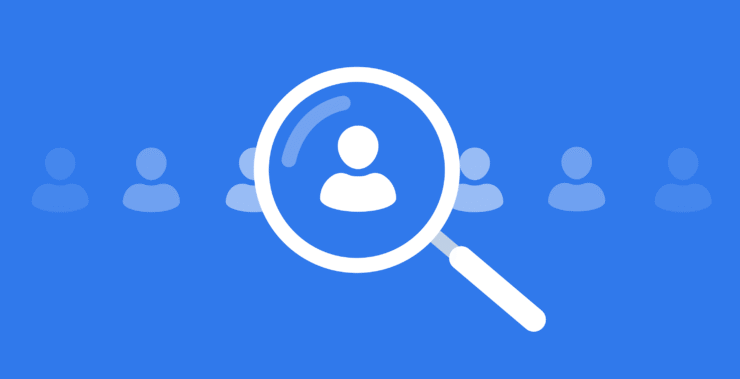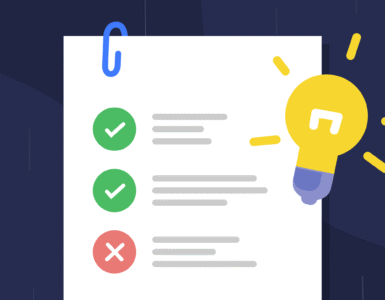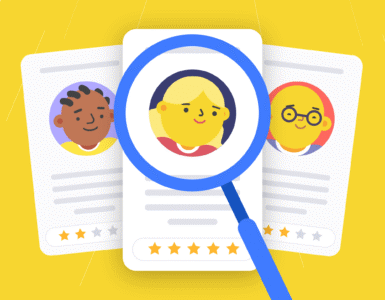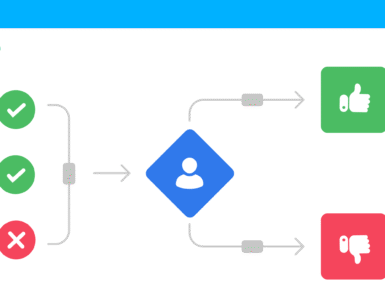Hiring used to be a beat most human resource professionals had memorized. A stack of resumes, a couple of decent cover letters, an interview or two, and a gut feeling about who would be “the one.” Now, in 2025, that beat is more like static.
Applications stack up in the hundreds. Talent gaps are harder to find. Interviews are booked, rescheduled, and then sidetracked by yet another scheduling conflict on the calendar. And in between, HR leaders are expected to make quick, fact-driven decisions — quickly and flawlessly.
In comes the new generation of hiring assessment tools and candidate screening technology. These are not gimmicky tests or digital gatekeepers. They are all part of a larger movement in how companies are evaluating talent — to reduce bias, save time, and actually measure what matters.
Increasingly, organizations are turning to pre-hire assessments and hybrid platforms to help cut through the clutter. And while some see these solutions as a lifeline, others wonder whether we’re losing the human touch in the bargain.
Where’s the equilibrium? Are we more smart decision-makers — or more machine-like ones?
Let’s unpack what every HR leader should know about modern candidate assessment tools, and how to navigate this new hiring landscape with clarity and confidence.
The rise of assessments in hiring
Not long ago, pre-hire assessments was the province of senior-level roles or new grads in slick trainee programs. They felt formal, elitist — a nicety, not a necessity. But as recruiting became more challenging and competitive, the old tactics started to crack. Resumes only provide a partial picture. Even structured interviews can fail.
So, testing insidiously migrated from the edges onto center stage.
Now, candidate assessment tools are business as usual — not cool, but because they keep HR teams moving faster, wiser, and more equitably. They don’t simply measure skill; they expose patterns, predict behaviors, and prevent the costly mistake of hiring on speculation.
Assessment centers have also come a long way. What used to be a day-long examination in a leased office with stern drills is now gone online — and smarter. Today’s centers are virtual, interactive, and meant to mimic real workplace situations. They focus on less stress and more potential. Candidates are encouraged to solve problems that they might actually face in the workplace — from dealing with customer complaints to leading a virtual team brainstorm. It’s not about seeing them perform; it’s about learning how they think.
In short, hiring assessments have evolved into a practical solution for a more chaotic and competitive hiring landscape. The goal? Less guesswork, more evidence — and better hiring.
What this means for HR (Hint: both easier and tougher)
Let’s get real: hiring software is a godsend. But it also raises the stakes.
With the right assessment software, HR can move quicker, screen more intelligently, and back hiring decisions with real data — not loose hunches. You can account for every shortlist, track every trend, and prove that your hires aren’t just pleasant — they’re going to perform.
But there’s the catch: with more tools comes more pressure to get it right.
You’re no longer just a character judge. You’re meant to read dashboards, navigate predictive scores, and still trust your instincts when the data shouts “no.” It’s the challenge of modern HR: be scientific and human — at scale.
Here’s what you actually get:
- Confidence under fire: You can tell why you passed on the smooth talker or fought for the quiet standout.
- Scalability: Whether you have 50 or 5,000 candidates, your process won’t break — and won’t burn out your team.
- Deeper insights: You’ll uncover skills or leadership potential no resume or scripted interview ever reveals.
But here’s what you risk:
- Overdepending on the tool: That great candidate who choked on a timed test might have been your next high performer.
- Missing the story: Data shows performance but not motivation. A score won’t tell you why they want this job.
- Bias in new disguise: Sure, tech can reduce bias — but only if the data it learns from is clean. Garbage in, garbage decision.
Use the assessment tools to inform, but own the decision. Don’t use algorithms as a crutch or a shield. A bad evaluation doesn’t always mean a bad candidate — and an A+ grade doesn’t always mean an incredible hire.
The best HR leaders use tools to start conversations, not end them.
Understanding HR assessment tools (and what they actually do)
So, what’s actually under the hood of these tools?
If you’re going to trust them to help shape your team, it helps to know how they work — and what kinds of assessments are quietly shaping the shortlist.
HR assessment tools are digital platforms designed to help you evaluate candidates beyond what a resume or even a well-rehearsed interview can reveal. They measure things like cognitive skills, personality traits, job knowledge, and situational responses — all before someone even sets foot in your office (or Zoom room).
Think of them as your trusted sidekick — the one that catches what you might miss, sees through the fluff, and helps you spot the real potential in a sea of promising LinkedIn profiles.
Here’s what these candidate assessment tools usually include:
- Cognitive ability tests – These measure how well someone solves problems, thinks logically, and adapts under pressure. Great for roles where quick thinking matters — or where chaos is just part of the job description.
- Personality assessments – These help you understand if a candidate will complement your team culture… or completely confuse it. It’s not about “good” or “bad” traits — it’s about fit.
- Skills and aptitude tests – These are the no-nonsense checks. Can they code, write, calculate, analyze — or are they just skilled at interviewing?
- Situational judgment tests (SJTs) – These show how candidates would handle real-life work situations. Would they escalate a problem? Smooth things over? Proactively solve it? SJTs reveal judgment in motion.
- AI-powered video interviews – These are more controversial. Some candidate evaluation software uses algorithms to analyze tone, microexpressions, even word choice. Results vary — and so does the ethical debate.
Most modern hiring assessment tools combine several of these formats to give you a more complete, evidence-backed view of each applicant before the interviews even begin. But with so many features and so much promise, the real challenge is knowing how to choose the right one.
How to choose HR assessment tools without losing your mind
Not all tools are created equal. And not all of them are right for your team. It’s easy to get caught up in slick demos or shiny dashboards — but choosing the best tool takes more than falling for a feature list.
Here’s a no-fluff checklist to help you cut through the noise:
- Is it job-relevant?
Don’t waste time testing for things that don’t matter. A front-end developer doesn’t need a verbal reasoning test — unless they moonlight as your UX writer. - Is it scientifically validated?
Always look for tools backed by research and validated by industrial-organizational psychologists. Marketing hype is cheap — evidence-based tools protect you from costly misfires (and legal headaches).
Does it integrate with your ATS?
Your tech stack should make life easier, not messier. Look for tools that seamlessly plug into your applicant tracking system. Tab overload is real, and switching screens 20 times a day isn’t the kind of multitasking anyone enjoys. - What’s the candidate experience like?
A clunky, confusing, or overly long assessment could turn great candidates away. Try the tool yourself. If it annoys you, it’ll annoy them — and the best candidates may not stick around. - Are the analytics useful — or just numbers?
The right tool won’t just spit out scores. It’ll give you actionable insights that help you make smarter, faster, and fairer decisions. Dashboards should empower you, not require another training just to interpret a bar chart.
The best assessment tool is the one that fits your hiring goals, team size, and workflow — and makes your life easier, not harder.
Now that you know what to look for, let’s get specific.
Top HR assessment tools to know in 2025
| Tool Name | Best For | Key Features | Why It Stands Out |
| HireVue | High-volume screening & AI video analysis | AI-powered interviews, game-based assessments, real-time scoring | Speeds up screening with predictive analytics and automation |
| Criteria | Cognitive & personality testing | Aptitude, personality, and emotional intelligence assessments | Scientifically validated tests for a broad talent pool |
| SHL | Enterprise-level hiring & leadership insights | Behavioral, skills, and leadership potential assessments | Depth of assessments for both frontline and executive roles |
| Pymetrics | Soft skills and bias reduction | Neuroscience-based games, DEI-friendly algorithm tuning | Reduces bias and maps candidates to roles based on traits |
| Codility | Tech hiring & skills validation | Live coding tasks, code playback, real-time scoring | Trusted for engineering assessments with high accuracy |
| The Predictive Index (PI) | Team fit & behavioral prediction | Behavioral and cognitive assessments, job matching | Strong for improving team dynamics and long-term fit |
| Harver | Volume hiring & job simulations | Situational judgment tests, video interviews, skill tests | End-to-end platform ideal for customer service and retail |
| TestGorilla | Quick setup & customizable testing | 300+ pre-built tests, ATS integrations, anti-cheating tech | Easy to deploy and scale for growing teams |
1. HireVue
A leader in AI-powered candidate assessment software, HireVue combines video interviews with structured game-based assessments to measure cognitive ability, emotional intelligence, and communication style. It’s particularly effective for high-volume hiring, significantly reducing time-to-hire and offering predictive scoring.
However, some ethical concerns around AI video analysis remain in debate. Critics argue that the AI-driven evaluations might unintentionally reinforce biases or fail to account for diverse communication styles, leading to concerns about fairness. Despite these issues, HireVue continues to be widely adopted due to its efficiency and predictive capabilities.
2. Criteria (formerly Criteria Corp)
Perfect for data-driven HR teams, Criteria offers a comprehensive suite of assessments, including cognitive aptitude, personality, and emotional intelligence tests. These are backed by rigorous validation, ensuring they measure what they intend to and are predictive of on-the-job performance.
The platform’s scientifically supported metrics help reduce bias and improve the accuracy of hiring decisions. With validity coefficients often exceeding 0.5, Criteria is highly reliable in its psychometric analysis. Its robust reporting helps ensure candidates are evaluated consistently and fairly across various metrics.
3. SHL
An enterprise-grade platform, SHL excels at assessing leadership potential, behavioral traits, and technical skills. It offers in-depth benchmarking, role profiling, and succession planning tools, making it suitable for both frontline and executive hiring.
Known for its predictive accuracy in complex roles, SHL provides global norm groups to benchmark candidates against international standards. Its deep analytical capabilities make it a strong choice for organizations looking to align hiring strategies with broader organizational goals.
4. Pymetrics
Pymetrics uses neuroscience-based games to assess soft skills such as risk tolerance, attention, and emotional processing. The tool matches candidates to roles based on ethical AI that emphasizes fairness and reduces bias, making it ideal for diversity-focused hiring.
Pymetrics stands out for its focus on ethical AI, helping companies make more equitable hiring decisions. With a strong track record in industries like finance and healthcare, it’s especially useful for roles where soft skills are paramount to success.
5. Codility
Codility is a go-to platform for technical hiring, offering live and timed coding tasks to assess real-world programming abilities. It includes plagiarism detection, score breakdowns, and even code playback, making it easy to understand how candidates approach problems.
This tool is essential for evaluating developers, engineers, and data scientists, where technical expertise is crucial. Codility’s hands-on approach allows employers to see how candidates think through challenges, providing deeper insights into their technical skills.
6. The Predictive Index (PI)
The Predictive Index focuses on understanding what motivates candidates and how they’ll fit within teams. Its Behavioral Assessment provides quick, actionable insights into a candidate’s potential performance, team dynamics, and long-term retention.
PI is great for reducing the risk of culture mismatches and improving team cohesion. Additionally, it offers valuable insights into leadership potential, helping organizations make informed decisions for succession planning and workforce development.
7. Harver
Harver is tailored for high-volume hiring, particularly in industries like retail, hospitality, and call centers. It offers realistic job previews, situational judgment tests, and automated interview workflows, which help efficiently manage large applicant pools.
Its ability to maintain a strong candidate experience while improving predictive accuracy makes it ideal for fast-paced recruitment. Harver integrates seamlessly with other HR systems, making it a versatile solution for employers dealing with high turnover or bulk hiring.
8. TestGorilla
TestGorilla is a fast, flexible, and scalable assessment platform, perfect for teams looking to streamline hiring. With over 300 pre-built tests, including coding, language, and soft skills assessments, it offers a wide range of options for diverse job roles.
Its anti-cheating features and instant reporting make it efficient and practical. TestGorilla’s customization options allow HR teams to tailor assessments according to the specific needs of the position, ensuring a targeted and effective hiring process.
The future: tools and the human touch can coexist
The truth is, HR assessment tools are evolving fast. AI is getting sharper. Integrations are smoother. Bias detection is improving. Soon, we’ll see more personalized assessments, smarter matching algorithms, and tools that adjust to the unique needs of every company and candidate.
But here’s the catch: no matter how advanced the software becomes, it’s not about replacing humans.
The future of hiring isn’t humans vs. machines. It’s a collaboration. Technology can help us make faster, fairer, better-informed decisions. But the final decision — the one that shapes your team — stays with the people who know more than scores.
Because potential doesn’t always fit in a box. And a resume can’t always show you someone’s grit, growth mindset, or passion.
That’s where your HR judgment comes in.
Best-in-class HR professionals balance candidate screening technology with good old-fashioned judgment — reading between the lines, posing the right questions, and listening beyond the numbers.
Of course, we need structured interviews. Of course, we need cognitive testing. But we also need eye contact, narrative, and the ability to perceive the spark in someone who’s not “perfect” on paper.
Final word
At the end of the day, tools are just that — tools.
The best HR leaders don’t just collect metrics. They create meaning. They don’t rely solely on automation. They design hiring journeys that are fair, inclusive, and human-first.
They understand that while data-driven hiring helps reduce bias and speed up decisions, it’s people who create connection, motivation, and culture.
So yes — lean on smart HR technology. Use the right tools for the right roles. Embrace what science and software can offer.
But don’t forget: the best hires happen when insight meets intention.Because even in a world full of dashboards, metrics, and machine learning — people still hire people.








